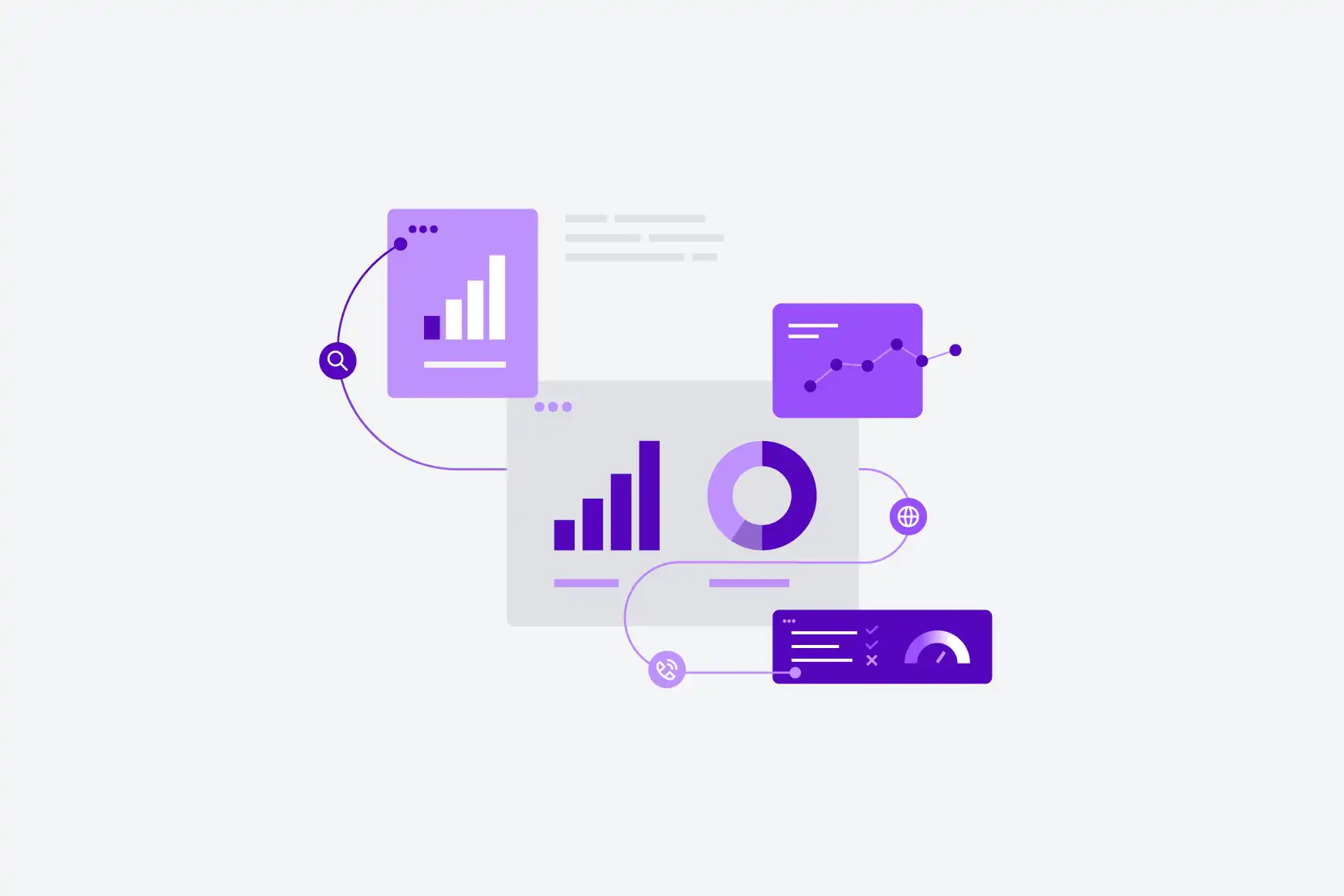How to Measure First Call Resolution In Your Contact Center

By Shauna Geraghty
0 min read

Continually measuring, tracking and acting on first call resolution (FCR) analysis outcomes should be the cornerstone of your call center evaluation process. If you don’t measure FCR, you can’t improve it.
Companies that consistently measure FCR are seeing major performance improvements. According to research conducted by The Ascent Group, 60% of companies measuring FCR for a year or longer reported improvements of up to 30% in their performance. With results like these, you cannot afford not to track FCR. In order to be effective, measurement of FCR must be reliable, consistent and accurate.
Below are eight steps to help you consistently measure first call resolution and track your results:
1. What is First Call Resolution?
The first step to measuring FCR is selecting a definition that makes the most sense for your team. You should decide whether you want your definition to be technical, specific, comprehensive, easy to understand or a combination of the four. Clearly defining FCR will help with the next steps.
Examples of first call resolution definitions are:
- The total number of calls resolved correctly on the first attempt divided by the total number of calls in a given period of time
- The total number of calls resolved correctly on the first attempt divided by the total number of first calls
2. Decide on FCR Criteria
Once you come up with an FCR definition, you should think about criteria/variables that may or may not be included in your analysis. To do this, you can start by making a list of all of the variables that can affect FCR and decide how you can consistently capture or exclude these with your analysis.
You should also decide on criteria for certain terms: “sufficiently resolving an issue on the first attempt,” “escalated call,” “callback” and “repeat call.” Here’s a list of some questions to consider during this process:
- Does FCR only apply to live contacts who call your company?
- Does “sufficiently resolved” mean that the customer’s problem was solved AND they were satisfied?
- Does an escalated call include calls that a manager dropped in on (i.e. whisper coaching, call barging, etc.)?
- Does an escalated call include calls where a colleague was conferenced in?
- Does a callback include callers who were recontacted via chat or email?
- Is FCR affected when a caller contacts the wrong department?
- Is FCR affected when a caller makes an error on their survey response?
- What constitutes a repeat call?
- Does FCR include calls abandoned in the IVR, waiting queue, etc. (i.e. before speaking with an agent)?
Be sure to be very specific about your definitions and inclusive/exclusive criteria. This again will be important for the subsequent steps.
3. Define a “Contact Window”
In addition to deciding on inclusion and exclusion criteria, you must also define a “contact window.” This is the maximum amount of time that is allowed to elapse between calls in order for them to contribute to FCR.
When a call is received after this “contact window,” it will not count as a follow-up call for the original issue and will not affect FCR.
For example, if you have a “contact window” of 24 hours and you receive a support issue at 1 p.m. on a Thursday, then the caller calls back on Monday at 9 a.m. regarding the same support issue, this follow-up call will not contribute to FCR since it was outside of the 24 hour “contact window.”
It is important to make sure that your “contact window” allows enough time for the caller to try the new solution and call back if their issue wasn’t resolved. It is also important to decide whether or not your “contact window” only applies to business hours.
4. Define an FCR Formula
Once you have picked a definition of FCR that makes the most sense for your company and have decided on criteria, you are ready to come up with an FCR formula. In order for FCR to be consistently measured over time, it must be concretely defined. These formulas will differ between companies and even between departments within the same company. What is important is that you choose a formula that works best for your team.
5. Conduct Customer Satisfaction Analyses with Surveys
The most important measure of FCR is the customer’s perception of whether or not their issue was resolved on the first attempt. This is because you can never be sure that their issue was resolved (maybe the customer gave up trying so they never called back) unless you ask the customer. There are a few ways you can do this:
Post-Call Surveys
After the call is finished, you can have your customers take a brief survey asking if their problem was resolved, if they are satisfied with how it was resolved and if they would recommend the company to a friend based on the service they received. Be sure to include a Likert Scale (i.e. scale from 1-10) with anchors (i.e. 1 being the worst, 10 being the best). You should have enough items that you can collect statistically meaningful data, but not so many that you discourage callers from completing the survey. Administering a survey immediately after the call has finished will reduce customer recall bias as well as interviewer bias and increases the likelihood that the caller will respond to the survey.
Email a Follow-Up Survey
Many companies opt to send an email survey after the call is finished. The main problem with this form of measurement is that most callers will not respond to the survey. Additionally, they might have difficulty remembering the interaction in its entirety (recall bias) because a significant amount of time has elapsed between when they interacted with your call center agent and when they answered the survey. Regardless of these issues, this method of data collection may be less biased than a direct question from the call center agent about their experience.
When sending email follow ups, it is helpful to send a follow-up survey after the event occurs. This will allow you to have a better understanding of whether or not their issue was fully resolved. For instance, if the caller had an issue related to their billing, a follow-up survey should be sent after their next bill is emailed out. This way you will have a better understanding of whether or not their issue was resolved to their satisfaction.
Have Your Agents Ask
A third and final method of collecting issue resolution data is having the agent directly ask the caller after the call .
Some questions to ask are:
- “Is there anything else I can help you with?”
- “Have I fully resolved your issue?”
- “Is there anything else I can do for you before we hang up?”
- “Have you called about the issue before?” If so, “When?”
The advantage to this approach is that you will collect more data than you would with the other approaches, since customers are typically more available. The disadvantage is that the responses will be biased because the interviewer is basically asking the customer how well they did their job. Many customers will sugarcoat their answer or give an answer that the interviewer wants to hear — even if it isn’t true. Agents can also be motivated to manipulate the customer’s response so managers will view them in a more favorable light, especially if rewards are tied to FCR performance. This metric is more prone to manipulation and should be interpreted with that in mind.
6. Conduct Call Statistics Analysis
One of the most important (and most frequently used) methods to keep track of FCR is conducting call statistics analysis. Basically, you want to know who is calling, why they called and when they called. To do this, you need the right tools:
CRM System
CRM systems with reporting capabilities can be useful tools for measuring FCR. When the agent has finished speaking with a customer, they can ask whether their issue was resolved to their standards. If so, they can make a note of it in the CRM, close the case/ticket/event as “resolved” and classify the customer as “Completely satisfied” using a disposition code. It is also helpful to assign each issue a unique identification number to help enhance the call tracking process. CRMs that are integrated with call center software are great tools for keeping track of call logs, which agent handled the call, the phone number the caller contacted and the number they called from.
Automatic Call Distribution (ACD) and Interactive Voice Response (IVR) Systems
ACDs and IVRs are extremely helpful for collecting additional information in the CRM’s call log. You can use information from the IVR to determine the general reason for a call (i.e. sales, support, technical issues). You can also easily keep track of the number that the customer dialed (i.e. the support line, a sales rep’s office, etc.) by tracking the DNIS from the IVR. Finally, you will know exactly how many calls terminated in the waiting queue from the data collected through the IVR. All of this information should be complied into a customer’s call log in your CRM so it can be extracted for analysis at any time.
Call Monitoring and Recording
Call recording is an invaluable tool for deciphering the reason for a customer’s call as well as checking to ensure that your call center agents are assigning accurate disposition codes to each call. Managers can review call recordings and assign (or check) tags or disposition codes to the call log after the interaction has ended. They can also listen in on live calls to ensure that agents are assigning the most accurate disposition code to the interaction. This can go a long way in making sure that the data accurately reflects the customer’s experience.
The most important tool in your FCR tool belt should be call center software that allows you to track FCR in a way that is most meaningful for your company. Whether the software records CRM information, allows agents to add disposition codes to the call logs or allows managers to listen in on live calls, you should ensure that your software is adequately meeting your needs.
7. Call Recording Analysis
Call-recording speech analysis systems are helpful for understanding the reason why customers call and why they might be dissatisfied. You can configure these systems to automatically identify key words as well as heightened emotional reactions of the caller from the call recordings.
They will flag these conversations so a manager can listen to the recording to verify what the caller said — this is important because these systems are prone to error. Although they can be very helpful, the drawbacks to this system and method are that it can be expensive and time consuming for management.
8. Continually Enhance Your FCR Definition, Data Collection Process, Analysis
Once you’ve run your FCR analysis, you should think about ways to improve the process. You can adjust the contact window, increase your list of inclusion and exclusion criteria, improve your data collection process, etc. You should continually enhance this process and adapt it to better meet the needs of your business.

2021 global Talkdesk contact center KPI benchmarking report
Download now to learn more about:
- The importance and benefits of benchmarking.
- How contact center metrics changed during 2020 compared to 2019.
- How your contact center performance stacks up against peers across industries, regions, and company sizes.
- Tips to optimize your contact center and improve CX.






